In a German tutorial video about EAGLE, starting at 1:15 the author adds a trim potentiometer for regulating the contrast of an A162 display. Between the slider and ground he adds a 100 nF capacitor.
What is the capacitor for?
Screen shot showing the circuit with capacitor C4:

Note that the author stresses that the video is about the basic features of EAGLE, not about circuit design and not even about good layout of a circuit. He says that he didn't build the circuit, and it may not work. The tutorial is very good — I learned using EAGLE from scratch.